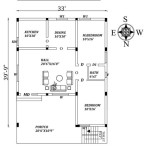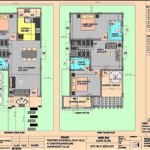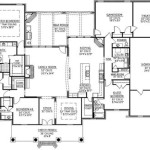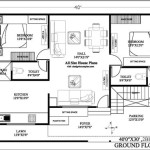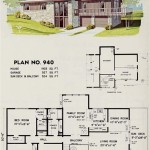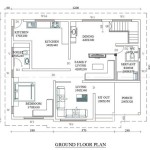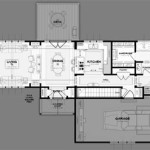Drawings of Floor Plans: A Comprehensive Guide
Floor plans, also referred to as blueprints or architectural drawings, serve as foundational documents in architecture, interior design, real estate, and construction. They represent a scaled diagram of a room or building viewed from above, effectively illustrating the relationship between rooms, spaces, physical features, and other elements within a structure. Understanding the purpose, components, and methods of creating floor plans is crucial for anyone involved in these industries, offering a clear visualization of space before and during the construction or renovation process.
The importance of floor plans extends beyond simply depicting the layout of a building. They are critical tools for communication, planning, and decision-making. Architects use them to convey design intent to clients and contractors. Interior designers utilize them to plan furniture placement and spatial arrangements. Real estate agents rely on them to showcase property layouts to potential buyers or renters. Construction workers depend on them to accurately translate architectural designs into physical structures. Without accurate and comprehensive floor plans, the risk of miscommunication, errors, and costly rework significantly increases.
Floor plans provide a clear understanding of the size and shape of rooms, the position of walls, doors, and windows, and the location of essential fixtures like plumbing and electrical outlets. They can also indicate furniture placement, appliance locations, and other design elements, giving a comprehensive overview of the building’s functionality and aesthetic. This level of detail allows stakeholders to visualize the finished product and make informed decisions about design changes, material selection, and budget allocation.
Moreover, floor plans are instrumental in ensuring compliance with building codes and regulations. They provide a visual representation of the building's adherence to safety standards, accessibility requirements, and zoning laws. By incorporating details such as fire exits, emergency routes, and accessible features, floor plans play a pivotal role in obtaining necessary permits and approvals from regulatory authorities.
Understanding the Essential Components of a Floor Plan
A detailed floor plan incorporates numerous elements, each serving a specific purpose in conveying information about the building's layout and features. Familiarity with these components is essential for accurately interpreting and utilizing floor plans effectively.
Walls: Walls are typically represented by thick, solid lines and define the boundaries of rooms and spaces. The thickness of the lines can indicate the type of wall, such as load-bearing walls which are typically drawn thicker than partition walls. The layout and configuration of walls are fundamental to understanding the overall structure of the building.
Doors and Windows: Doors are usually depicted as arcs indicating the direction of the swing, along with a line representing the door itself. The size and placement of doors are critical for evaluating accessibility and traffic flow within the building. Windows are generally represented by parallel lines within the wall, indicating the window opening and possibly specifying the type of window (e.g., casement, sliding, double-hung). The placement and size of windows affect natural light and ventilation within each room.
Fixtures and Appliances: Floor plans typically include the location of essential fixtures and appliances, such as sinks, toilets, bathtubs, showers, stoves, refrigerators, and washing machines. These are usually represented by standardized symbols, allowing for easy identification and understanding. The placement of these elements is crucial for planning plumbing and electrical layouts.
Stairs: Stairs are shown as a series of parallel lines representing each step, with an arrow indicating the direction of ascent or descent. The number of steps and the landing configurations are vital for understanding the layout of multi-story buildings. The dimensions of the stairs are also subject to building codes regarding rise and run for safety and accessibility.
Dimensions: Dimensions are indicated by lines and numerical values that specify the length, width, and height of rooms and other features. These measurements are crucial for determining the size and proportions of spaces and for planning furniture placement and material quantities. Accurate dimensions are essential for construction and renovation projects.
Labels and Annotations: Labels and annotations are used to identify rooms (e.g., living room, bedroom, kitchen) and other features (e.g., closet, pantry, fireplace). They can also include notes about materials, finishes, and other specific details. Clear and concise labels are critical for understanding the purpose and function of each space within the building.
Scale: The scale of the floor plan indicates the relationship between the drawing and the actual size of the building. It is typically expressed as a ratio, such as 1:50 or 1:100, indicating that one unit on the drawing represents 50 or 100 units in reality. Understanding the scale is crucial for accurately interpreting the dimensions and proportions of the building.
Methods of Creating Floor Plans
Floor plans can be created using a variety of methods, ranging from traditional hand-drawing techniques to sophisticated computer-aided design (CAD) software. The choice of method depends on factors such as the complexity of the project, the level of detail required, and the available resources.
Hand-Drawn Floor Plans: Traditionally, floor plans were created by hand using pencils, rulers, and other drafting tools. While this method is still used for preliminary sketches and conceptual designs, it is less common for final construction documents due to its time-consuming nature and potential for inaccuracies. Hand-drawn floor plans require a high level of skill and precision to ensure accuracy and clarity.
Computer-Aided Design (CAD) Software: CAD software, such as AutoCAD, Revit, and ArchiCAD, has revolutionized the creation of floor plans. These programs allow architects and designers to create accurate and detailed drawings quickly and efficiently. CAD software offers a wide range of tools and features, including precise dimensioning, layering, and the ability to create 3D models from 2D floor plans. The digital nature of CAD files also makes it easy to share and collaborate on projects.
Building Information Modeling (BIM) Software: BIM software represents a more advanced approach to creating floor plans. BIM goes beyond simple 2D or 3D drawings to create a comprehensive digital representation of the building, including all of its physical and functional characteristics. This allows for better coordination between different disciplines, such as architecture, engineering, and construction, and facilitates more efficient management of the building throughout its lifecycle.
Online Floor Plan Software: Numerous online floor plan software options are available for users who need a simpler and more accessible solution. These platforms are often cloud-based, allowing users to create and share floor plans from any device with an internet connection. While they may not offer the same level of sophistication as professional CAD or BIM software, they are often sufficient for basic floor plan creation and visualization.
Laser Scanning and 3D Modeling: For existing buildings, laser scanning technology can be used to create accurate 3D models of the interior spaces. This data can then be used to generate floor plans and other architectural drawings. Laser scanning provides a highly accurate and efficient way to document existing conditions, which is particularly useful for renovation projects.
Key Considerations When Interpreting and Using Floor Plans
Even with a well-drawn floor plan, misinterpretations can occur if the symbols and conventions aren't well understood. Being aware of certain aspects allows users to extract the correct information and use the plans effectively.
Understanding Symbols and Abbreviations: Floor plans use a standardized set of symbols and abbreviations to represent different elements and features. It is crucial to familiarize oneself with these conventions to accurately interpret the drawings. For example, "WC" typically stands for water closet (toilet), while "HVAC" refers to heating, ventilation, and air conditioning systems. Understanding these symbols is paramount for correctly interpreting the floor plan's information.
Verifying Dimensions and Scale: Always verify the dimensions and scale of the floor plan to ensure accuracy. Discrepancies can lead to errors in construction or renovation. Use a ruler or measuring tape to double-check critical dimensions and ensure that they match the scale indicated on the drawing. Inaccuracies in dimensions can lead to significant problems with furniture placement, material orders, and spatial planning.
Considering Spatial Relationships: Pay attention to the spatial relationships between different rooms and areas within the building. Consider how people will move through the space and how different spaces will interact with each other. For example, the proximity of the kitchen to the dining room can impact the flow of traffic and the convenience of meal service. Carefully analyzing these relationships can optimize the functionality and livability of the building.
Identifying Potential Issues: Use the floor plan to identify potential issues or conflicts, such as tight clearances, awkward layouts, or code violations. Addressing these issues early in the design process can save time and money during construction. For example, identifying a narrow hallway or a poorly placed door early in the design phase can prevent costly and time-consuming rework later on.
Communication and Collaboration: Floor plans are a vital tool for communication and collaboration between architects, designers, contractors, and clients. Use the floor plan as a common reference point to discuss design ideas, resolve conflicts, and ensure that everyone is on the same page. Sharing and discussing floor plans regularly can prevent misunderstandings and ensure a successful project outcome.
Accurate drawings of floor plans are invaluable assets across a spectrum of industries. Whether for new construction, renovations, or real estate transactions, a clear and detailed floor plan serves as a cornerstone for communication, planning, and successful project execution. Mastery of the principles and practices associated with floor plans ensures that projects are completed efficiently, accurately, and to the satisfaction of all stakeholders.

Floor Plan Wikipedia

Draw Floor Plans To Scale With Symbols Dimensions Cedreo

How To Draw A Floor Plan By Hand Step Guide

Home Floor Plans House Plan Drawings

Floor Plan Design Tutorial

How To Draw A Floor Plan Live Home 3d

Building Plans

Floor Plans Of A House Project Overview Green Arch World

How To Draw Blueprints For A House With Pictures Wikihow

Creating The Perfect Floor Plan For Your New Home Thomas Custom Builders

